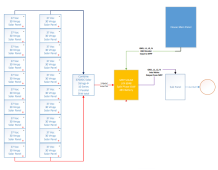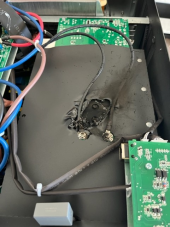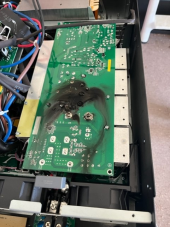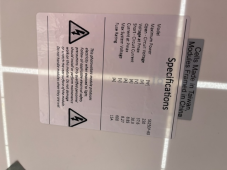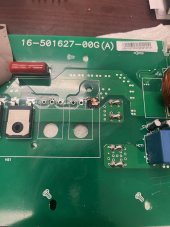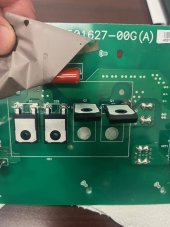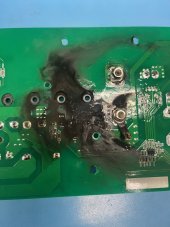My dad and I installed this LVX6048 Saturday afternoon. We could not get the WIFI to connect to the APP as the setup reported the WIFI module on the LVX6048 could not communicate with the inverter. All else was working well.--FYI--One annoying problem on these others have reported here is the settings require one at a time be saved by backing out of the program screen. Yes each setting. Very painful.
Per the booklet we setup 2 strings of 10 series panels. Measured the voltage on each string open circuit to be about 376VDC. Ran separate strings to the inverter and combined them into one 376VDC 5KW PV input. I guess I was a little surprised they have 1 PV input for a split phase 6kW inverter--Yes I double and triple checked the wiring and voltage.
We were very pleased with its performance as we were seeing 319VDC on the inverter while reporting ~3.3kW at the peak of the mid day Sunday.
We went for a drive down the street Sunday late afternoon to come back to the inverter smoking. Test showed the PV input was a dead short.
I brought the unit back to my house and took it apart. Pictures attached showed the MPPT unit is destroyed. Tested with My 48V battery stack and connected to my AC power and all other functions seem to be in working order.
Pictures attached show setup, internal damage and the label on the solar panels we used.
My main concern is how this happened. As always I welcome your thoughts or questions.
Per the booklet we setup 2 strings of 10 series panels. Measured the voltage on each string open circuit to be about 376VDC. Ran separate strings to the inverter and combined them into one 376VDC 5KW PV input. I guess I was a little surprised they have 1 PV input for a split phase 6kW inverter--Yes I double and triple checked the wiring and voltage.
We were very pleased with its performance as we were seeing 319VDC on the inverter while reporting ~3.3kW at the peak of the mid day Sunday.
We went for a drive down the street Sunday late afternoon to come back to the inverter smoking. Test showed the PV input was a dead short.
I brought the unit back to my house and took it apart. Pictures attached showed the MPPT unit is destroyed. Tested with My 48V battery stack and connected to my AC power and all other functions seem to be in working order.
Pictures attached show setup, internal damage and the label on the solar panels we used.
My main concern is how this happened. As always I welcome your thoughts or questions.



